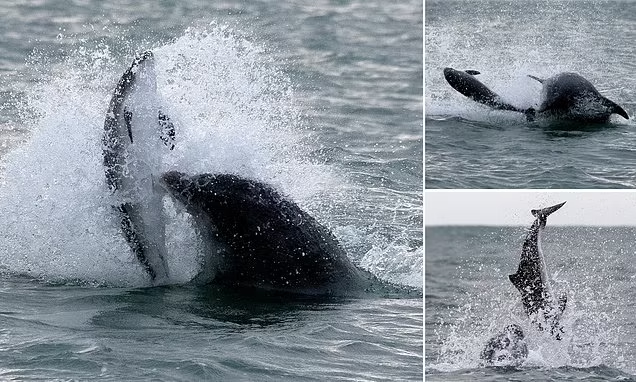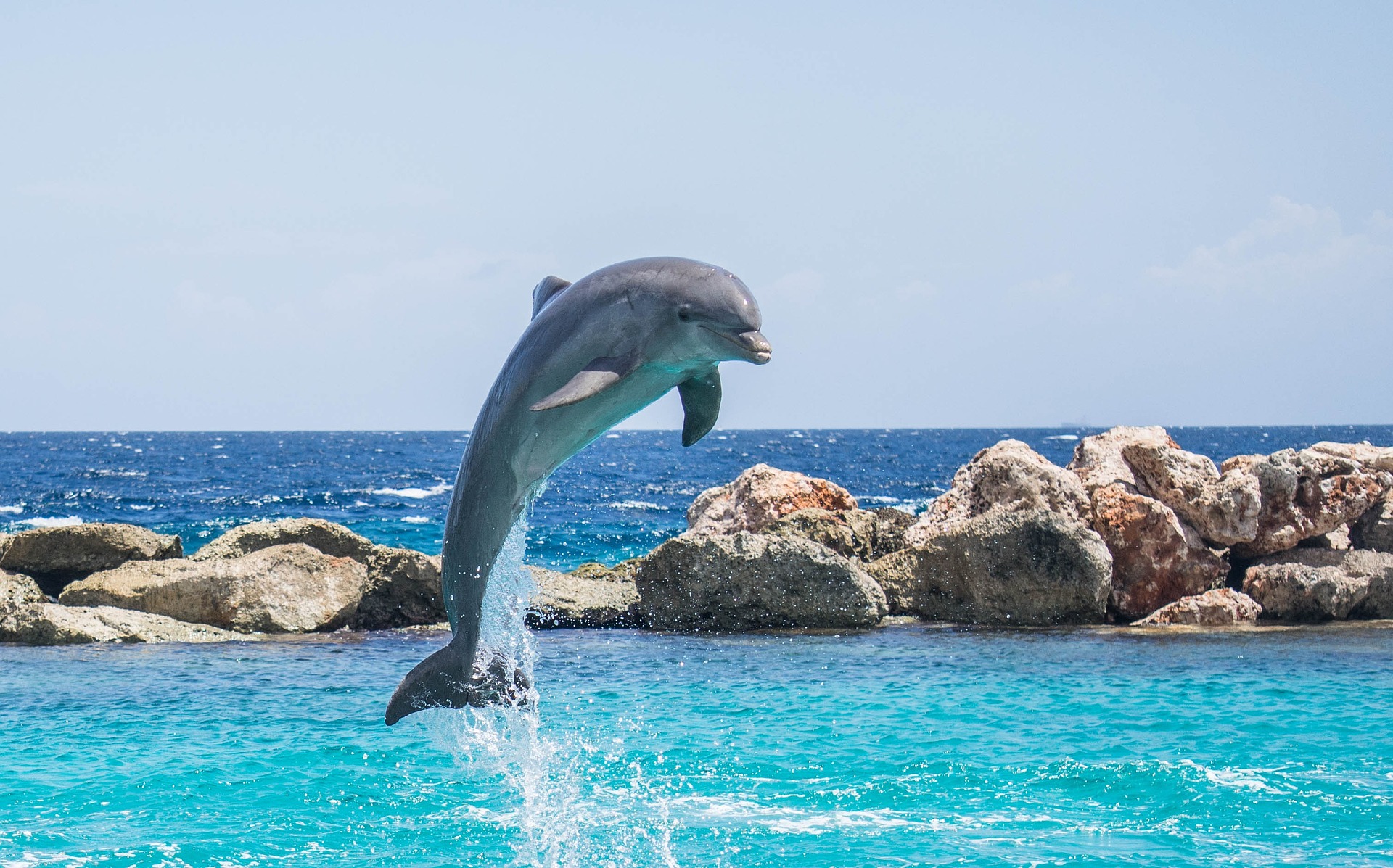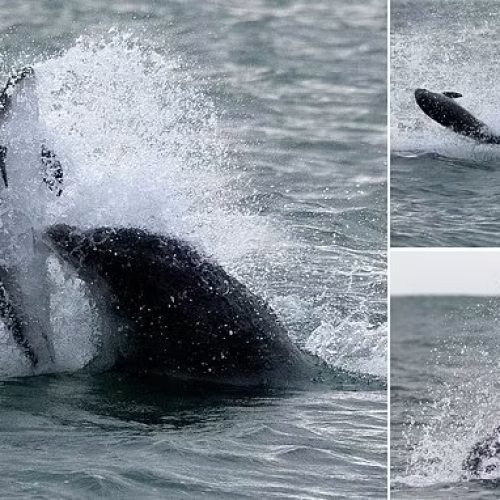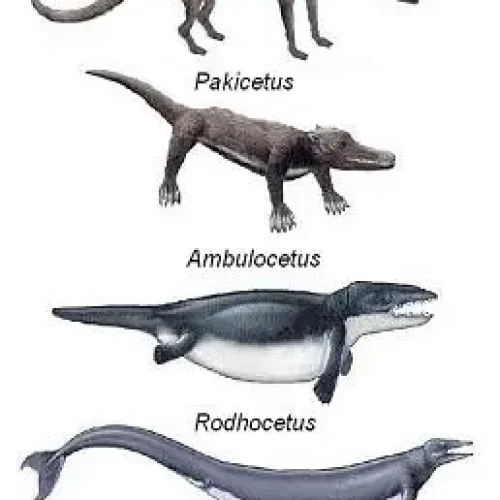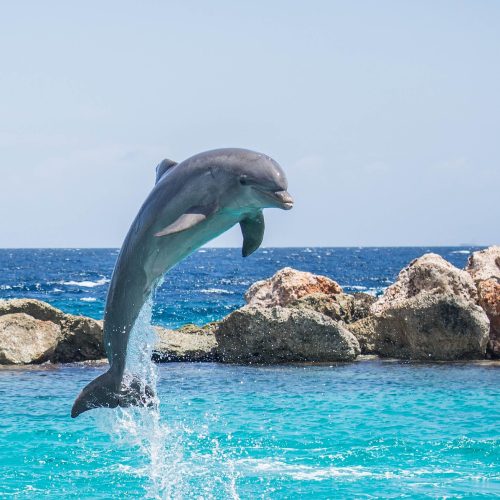Did you know that dolphins have discovered the secret to longevity?
While we humans are desperately searching for a cure-all for aging, these marine mammals seem to have found the key to beating the clock. Scientific studies have shown that some species of dolphins can live to be 50 years old or more, while still maintaining excellent health.
Let’s dive into the depths of the ocean and discover how these fascinating creatures stay young and vibrant, and what we can learn from their secrets to longevity.

In this article
UNDERSTANDING DOLPHIN LIFESPAN
Dolphins are fascinating marine mammals known for their intelligence, social behavior, and remarkable longevity. But just how long do these aquatic creatures live? The answer varies depending on the species.
Bottlenose dolphins, the most well-known species, typically live between 30 to 50 years in the wild. However, some individuals have been known to reach 60 years or more. Orcas, also known as killer whales, are the largest members of the dolphin family and have an even more impressive lifespan.
Female orcas can live up to 90 years, while males average around 50 to 60 years. Smaller dolphin species, such as the spinner dolphin, have a shorter lifespan of about 20 to 25 years.
Several factors contribute to the impressive lifespans of dolphins. Their environment plays a crucial role, with dolphins living in cleaner, less polluted waters generally living longer.
Social bonds and family structures also influence longevity, as dolphins in stable social groups tend to fare better. Additionally, the quality and availability of food resources impact dolphin health and lifespan.
Dolphins are among the longest-lived marine mammals. While some whale species, like the bowhead whale, can live over 200 years, most other marine mammals have shorter lifespans.
Seals typically live between 20 to 30 years, while sea lions and walruses average around 20 to 25 years. Dolphins’ longevity is attributed to their advanced cognitive abilities, social structures, and adaptations to their aquatic environment.
LONGEVITY SECRETS OF DOLPHINS
Dolphins possess unique genetic variations that may contribute to their long lifespans. Studies have identified genes involved in DNA repair, tumor suppression, and immunity that are particularly active in dolphins.
These genetic factors help protect against age-related diseases and promote healthy aging.
Dolphins exhibit remarkable cellular and molecular adaptations that combat the effects of aging. Their cells have enhanced antioxidant defenses, which help neutralize harmful free radicals and prevent cellular damage.
Dolphins also have efficient DNA repair mechanisms that maintain genomic stability and reduce the accumulation of mutations over time.
Telomeres, protective caps at the ends of chromosomes, play a crucial role in aging. In most mammals, telomeres shorten with age, leading to cellular senescence and age-related disorders.
However, dolphins have been found to maintain relatively long telomeres throughout their lives, which may contribute to their longevity and resistance to age-related diseases.
Dolphins have evolved unique physiological adaptations that promote healthy aging. Their cardiovascular system is highly efficient, with a low resting heart rate and the ability to regulate blood flow to vital organs.
Dolphins also have a thick layer of blubber that provides insulation, energy storage, and buoyancy, reducing the metabolic demands on their bodies.
DOLPHIN DIET AND ITS IMPACT ON LONGEVITY
Dolphins primarily feed on a variety of fish, including mackerel, herring, and cod. This fish-based diet is rich in essential nutrients, such as omega-3 fatty acids, which have anti-inflammatory properties and support cardiovascular health.
The high-quality protein in fish also helps maintain lean body mass and supports cellular repair processes.
Many of the fish species consumed by dolphins contain natural antioxidants and anti-inflammatory compounds. These bioactive substances help combat oxidative stress and inflammation, which are major contributors to aging and age-related diseases.
By consuming a diet rich in these protective compounds, dolphins can maintain optimal health and longevity.
In the wild, dolphins often experience periods of feast and famine, depending on the availability of prey. This natural intermittent fasting and caloric restriction may have longevity-promoting effects. Studies in other animals have shown that caloric restriction can extend lifespan and improve markers of health.
While more research is needed, the intermittent fasting patterns observed in wild dolphins may contribute to their remarkable longevity.
The longevity-promoting aspects of the dolphin diet have caught the attention of researchers studying human aging. Incorporating more fish, particularly those rich in omega-3 fatty acids, into the human diet may offer similar health benefits.
Additionally, the concept of intermittent fasting has gained popularity as a potential strategy for promoting longevity and reducing the risk of age-related diseases in humans.
PHYSICAL ACTIVITY AND SOCIAL ENGAGEMENT
Dolphins are known for their active lifestyle, which plays a crucial role in maintaining their cardiovascular health. Continuous swimming not only keeps their hearts strong but also helps regulate their metabolism, allowing them to efficiently process the energy they consume.
This high-energy lifestyle is a key factor in their ability to live long, healthy lives.
In addition to physical activity, social engagement is another essential aspect of dolphin longevity. Dolphins form strong social bonds within their pods, which helps reduce stress levels and promotes overall well-being.
These close-knit relationships provide emotional support and create a sense of belonging, contributing to their mental health and resilience.
Moreover, life in dolphin societies is cognitively stimulating. Dolphins constantly engage in problem-solving and cooperative behaviors, keeping their minds sharp and active.
This mental exercise helps maintain cognitive function as they age, similar to how mentally stimulating activities can benefit human brain health in later life.
REPRODUCTION AND LIFESPAN IN DOLPHINS
Female dolphins have an extended reproductive life compared to many other mammals. Unlike humans, who typically experience menopause in their late 40s or early 50s, female dolphins can continue to give birth well into their 40s and even 50s.
This extended fertility allows them to contribute to the survival and growth of their population over a longer period.
Interestingly, menopause does occur in some dolphin species, such as the short-finned pilot whale. In these societies, post-reproductive females play a crucial role in the survival of their offspring and the transfer of knowledge to younger generations.
They guide their pods to food sources, teach them essential skills, and provide support during challenging times, ensuring the long-term success of their family groups.
This intergenerational transfer of knowledge is a fascinating aspect of dolphin societies that has parallels in human cultures.
Just as grandparents pass down wisdom and traditions to their grandchildren, older dolphins share their expertise with younger pod members, enhancing their chances of survival and longevity.
THREATS TO DOLPHIN LONGEVITY
Despite their remarkable adaptations for long life, dolphins face numerous threats that can impact their longevity.
Environmental pollutants, such as heavy metals and persistent organic pollutants, accumulate in dolphin tissues over time, leading to health problems and reduced life spans. These contaminants can cause reproductive issues, weaken immune systems, and increase the risk of diseases.
Anthropogenic noise pollution is another concern for dolphin well-being.
Dolphins rely on echolocation for communication, navigation, and foraging, and excessive underwater noise from shipping, oil and gas exploration, and military sonar can disrupt these essential behaviors. Chronic exposure to noise pollution can lead to heightened stress levels, which may have long-term consequences for dolphin health and longevity.
Fisheries interactions, including entanglement in fishing gear and bycatch, pose significant risks to dolphin survival. Dolphins can become entangled in nets or lines, leading to injuries, drowning, or starvation.
Bycatch, the unintentional capture of dolphins in fishing gear, is a major threat to many populations worldwide.
Finally, climate change presents an emerging challenge for dolphin longevity. Rising sea temperatures, ocean acidification, and changes in prey distribution can all impact dolphin food sources and habitat quality.
As the oceans continue to change, dolphins may face increasing pressure to adapt to new environmental conditions, potentially affecting their long-term survival and longevity.

